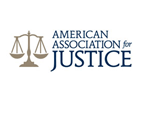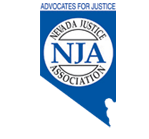In the 1940s and 50s, millions of Americans toiled over their lawns with reel mowers. Today, they’ve shifted away from them and come to rely on the powered variety. But that shift has not come without consequences. Powered mowers are also more apt to cause personal injuries than their reel relatives. How do we know that’s a fact?
Cutting to the Facts of the Matter
The U.S. Consumer Product Safety Commission periodically issues reports projecting the number of mowing accidents they expect to see for the year. The last numbers we were able to obtain from their website indicate that more than 17,000 people are likely to find themselves on the wrong end of a lawn mower by the conclusion of 2015 and some of them won’t live to tell about it. Who Receives the Brunt of It?
Who often ends up with the worst lawn mower injuries? The Amputee Coalition sadly pointed out earlier this year that it’s children. Over the years, many learned publications and safety experts have studied the topic. In the 1990s and early 2000s, the sheer number of injured children was heartbreaking. Case in point; one magazine, the Journal of Trauma, put the number of injured children in 2005 at over 9,000. Thankfully, progress has been made since then and the annual numbers are now generally below 1,000.
What Do Victims Experience?The category of personal injuries adults and children experience during lawn mower accidents has great depth and breadth to it. Amputation is one big concern but it is far from being the only one. The others include, but are not confined to:
- Sensory Loss and Tooth Avulsion
- Broken Bones and Ruptured Muscles
- Soft Tissue Damage
- Severed Arteries
- Spinal and Nerve Damage
- Head Trauma
- Crushed Organs and Internal Bleeding
Why, despite all of the concerted efforts, do bad lawn mower accidents continue to happen to good people? In some cases, the accidents are out of a person’s control. For example, there have been times when powered equipment has unexpectedly failed or Mother Nature has intervened (e.g. falling limbs).
We’ve also seen situations where motor vehicle drivers have jumped curbs in rural neighborhoods and hit mowers. Those types of lawn mower accidents are often attributed to drug use, intoxication, medical emergencies, sun glare and poor road conditions. But let us make it clear, it isn’t always the other person that’s to blame for lawn mower accidents.
Sometimes the person or people using the mower fail to do their due diligence too. Perhaps they’re distracted and forget to put on the brakes. Maybe they swerve to miss the family pet and cause a rollover. Either way, it is never safe to assume that lawn mower accidents are one person’s fault or another’s. We’d recommend contacting an attorney well versed in accident reconstruction and personal injury law.
Determine Who is Really to Blame for Lawn Mower Injuries
Reconstructing the lawn mower accident and assigning degrees of liability to all participants is the wisest choice to make. Afterward, lawn mower accident victims may decide whether or not they would like to pursue the matter further by filing personal injury suits. To learn more about lawn mower injuries and who may be at fault, please contact us today.

 call:
call: 







